The dogs catch a jackrabbit
that is slow and heavy with
dog-saliva now.
I leap across ground shouting
like a crazyman growl and
six dogs drop the blinking
grey fur. The rabbit stares
at me and I don't know if he
is flying back to that other
place where rabbits run like
air.
Sometimes it takes me awhile
to become one with the land.
* * *
Sometimes the sameness of my
days feels like the dry wind over
brittle rabbit-bush and stiff
cacti.
Again sun rises hot and high
hungry for moisture from my
open mouth. Dry wind sucks
my wet insides out like a
jackrabbit running to dust
over miles of creaking earth.
I make footprints blown back
into formless dust almost be-
fore I pass.
I walk towards horizon getting
no closer to how bones lying
white and silent sing with
wind. I see change in mountains
riverbeds arroyos see the
crumbling beauty of time-nibbled
bones and I pause and know
change is eternity.
For twenty-five years I walk
this same way one foot at a
time this sameness quenching
thirst like wind drying a wet
mouth. There is nothing but
this thin shell of land over
my heart a heart like a tired
jackrabbit changing to wind
over bone.
[adapted from _____________]
--------------------------
Gratitude to Wild Beings, our brothers and sisters, teaching secrets, freedoms, and ways; who share with us their milk; self-complete, brave, and aware.
in our minds so be it.
Gary Snyder
Prayer for the Great Family------------------------------
Pygmy OwlYou know how strong
fate can be, but can you imagine
the sharp stab of the talons
to the back of your head?
The pygmy owl drops on a steep angle
a collision course with the ground
wings splayed
like an angel.
It falls with fervor
upon Mouse
one of the world's warm breathers
groceries in a grey sleeve of fur.
Did you not think
the same could happen to you?
And is it any different
than love?
The owl pulls hard
tearing at tissue and tendon
it waves the tiny carcass around
like a victory banner.
Charles Finn



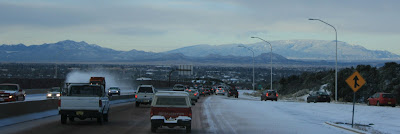


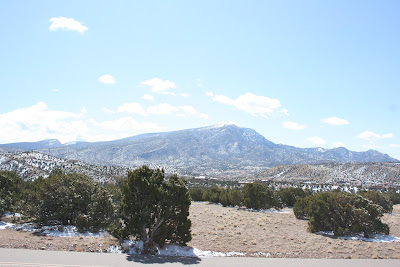
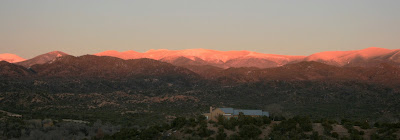
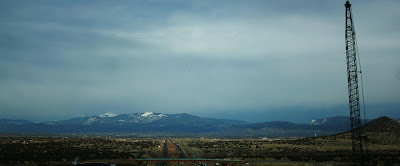
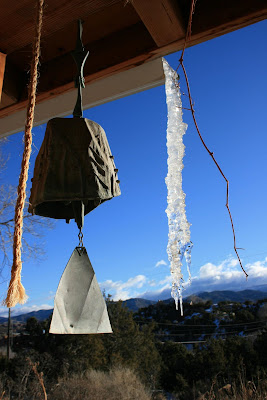
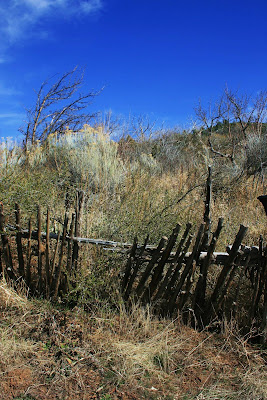 You can't tell if you're inside or outside the brown adobe walls.
You can't tell if you're inside or outside the brown adobe walls. The billboards all advertise watches and jewelry, while cows chew cholla for miles around.
The billboards all advertise watches and jewelry, while cows chew cholla for miles around.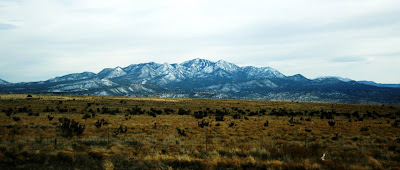 In Santa Fe.
In Santa Fe.
 The Rio Puerco Preserve is located approximately 10 miles South of Cuba, NM. Marion Butte is visible in the background.
The Rio Puerco Preserve is located approximately 10 miles South of Cuba, NM. Marion Butte is visible in the background. The river has deeply downcut because of erosion. There is not much rock in this valley alluvium and, with overgrazing, the plant life has not been able to hold together the soil. It is estimated that the Puerco is responsible for 50% of the silt flowing into the Rio Grande. Marion Butte in the background again.
The river has deeply downcut because of erosion. There is not much rock in this valley alluvium and, with overgrazing, the plant life has not been able to hold together the soil. It is estimated that the Puerco is responsible for 50% of the silt flowing into the Rio Grande. Marion Butte in the background again. In many places there is not enough vegetative seed source to provide ground cover.
In many places there is not enough vegetative seed source to provide ground cover.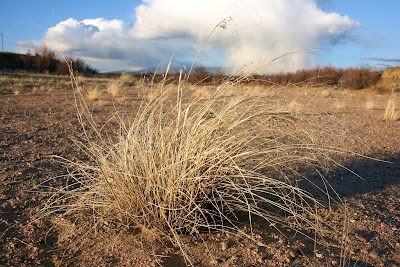 Although there is some grass growing, and at least one large cottonwood remains.
Although there is some grass growing, and at least one large cottonwood remains. So I decided to climb Marion butte for a better view. There was a storm brewing, however.
So I decided to climb Marion butte for a better view. There was a storm brewing, however.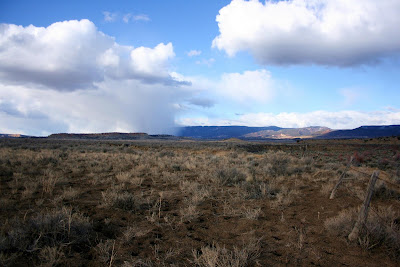 Under the dark clouds New Mexico's colors showed stronger.
Under the dark clouds New Mexico's colors showed stronger.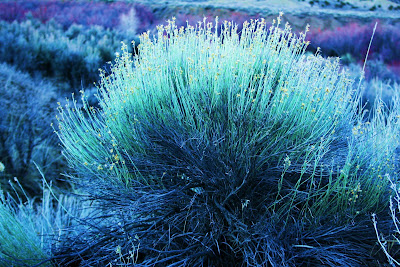 There was something of a stairway leading up the Butte.
There was something of a stairway leading up the Butte.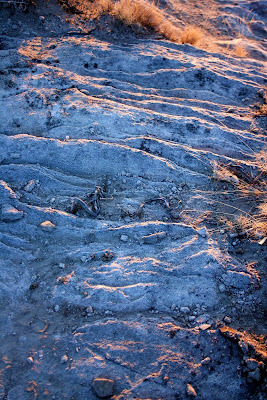 On top of the peak I found a thriving pack rat nest, layers of petrified wood, scarified pinyon, and an interesting insect living among the dry leaves of the mountain willow. Sunset looking west over Mesa Portales:
On top of the peak I found a thriving pack rat nest, layers of petrified wood, scarified pinyon, and an interesting insect living among the dry leaves of the mountain willow. Sunset looking west over Mesa Portales: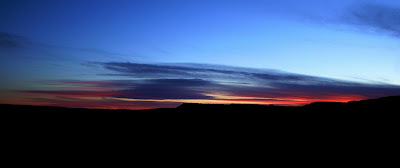 I walked back to camp under the gathering twilight, with one last look at Marion Butte, who watches with eternal vigilence over the Preserve.
I walked back to camp under the gathering twilight, with one last look at Marion Butte, who watches with eternal vigilence over the Preserve.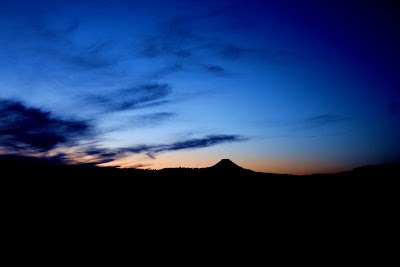

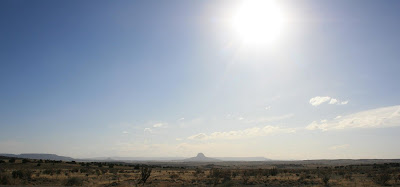
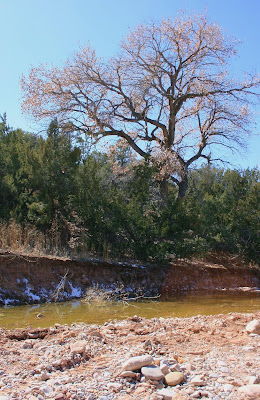 To see placement, form, identity as intentional.
To see placement, form, identity as intentional.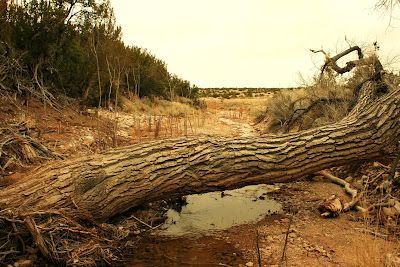 Give weight to each concrete arrangement of roots-on-rocks, moss&waterfall, blooming flowers and looming trees.
Give weight to each concrete arrangement of roots-on-rocks, moss&waterfall, blooming flowers and looming trees.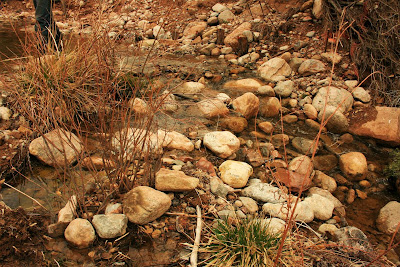 To swim in these origami arrangements of order without order: perfect, designed for some terrible purpose, full of trapdoors and hidden keys, rooms too big and too small and just right for humans.
To swim in these origami arrangements of order without order: perfect, designed for some terrible purpose, full of trapdoors and hidden keys, rooms too big and too small and just right for humans.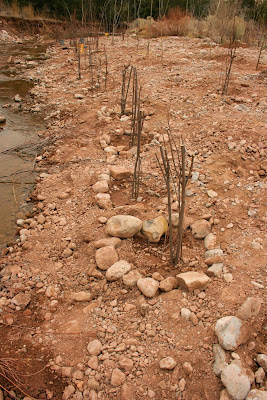 To witness and accept and honor both what is done at the mercy of nature (man-made) and what is nature-made.
To witness and accept and honor both what is done at the mercy of nature (man-made) and what is nature-made.
 Las Huertas drains the northwestern Sandia Mountains with what once was perennial flow. Today, the major environmental impacts are pollution from exurban septic tanks and ephemeralized flow diluted by diversion from over-allocated acequias (drainage ditches).
Las Huertas drains the northwestern Sandia Mountains with what once was perennial flow. Today, the major environmental impacts are pollution from exurban septic tanks and ephemeralized flow diluted by diversion from over-allocated acequias (drainage ditches).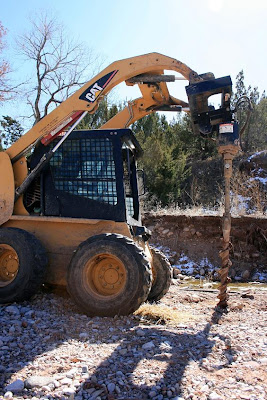 To add to our difficulties, the aforementioned cobble size made drilling difficult. I asked Peter about his secret for getting the auger through the cobbles, avoiding boulders and finding water. He clasped his hands in prayer and said “Good Earth, we're trying to do right by you, may we please put a cottonwood here?” He was the best among us this week, drilling more holes and lifting more rock, working harder than anybody, although he's lived beyond the half century mark when he never thought he'd make it out of his teens (or twenties). He and the rest of our gang – rock climbers and outward bound instructors – drive every day up and down the Rio Grande, the heart (carotid artery?) of New Mexico, a short stretch of the Camino Real whose terminus, Santa Fe, is also our own..
To add to our difficulties, the aforementioned cobble size made drilling difficult. I asked Peter about his secret for getting the auger through the cobbles, avoiding boulders and finding water. He clasped his hands in prayer and said “Good Earth, we're trying to do right by you, may we please put a cottonwood here?” He was the best among us this week, drilling more holes and lifting more rock, working harder than anybody, although he's lived beyond the half century mark when he never thought he'd make it out of his teens (or twenties). He and the rest of our gang – rock climbers and outward bound instructors – drive every day up and down the Rio Grande, the heart (carotid artery?) of New Mexico, a short stretch of the Camino Real whose terminus, Santa Fe, is also our own..